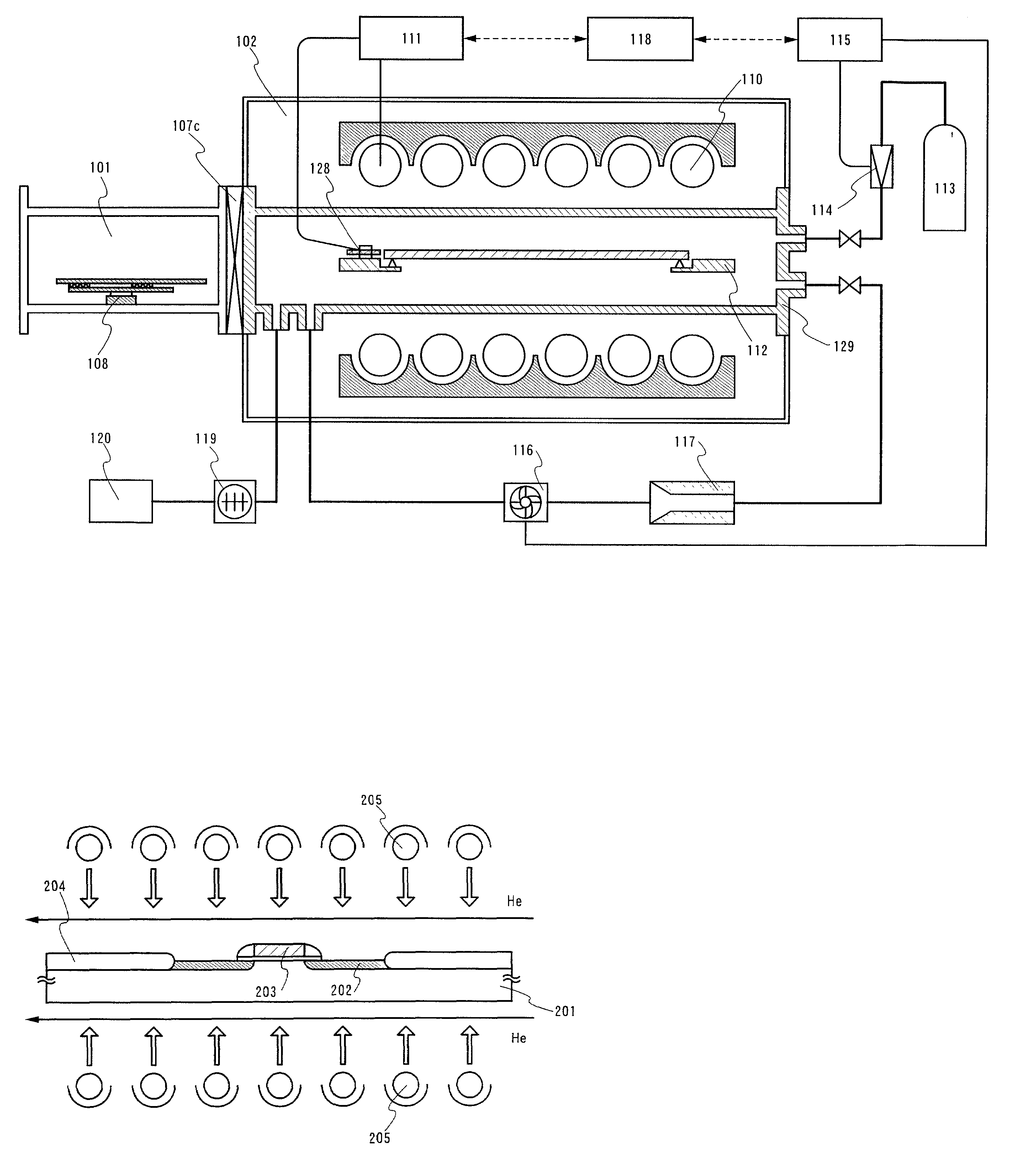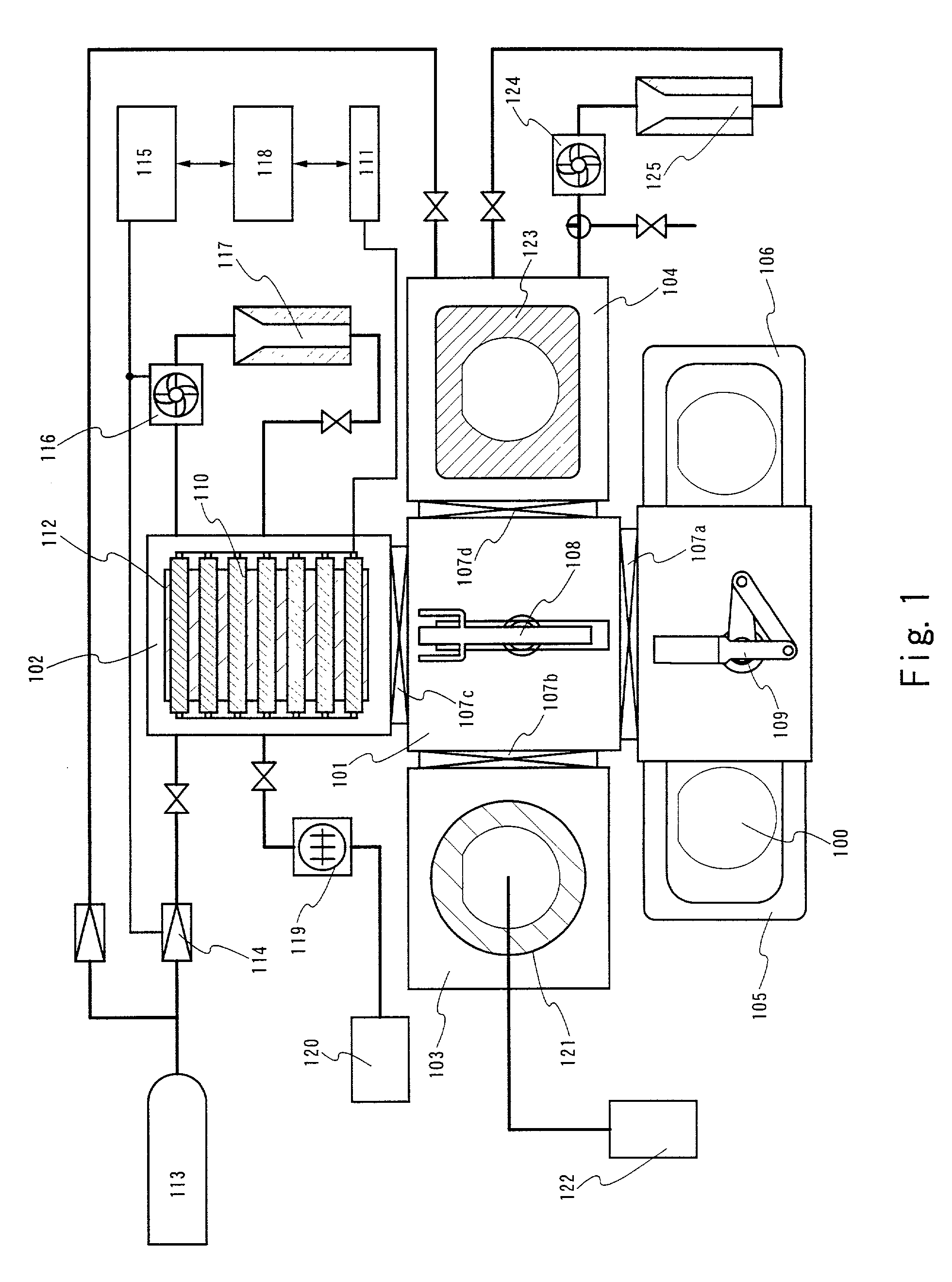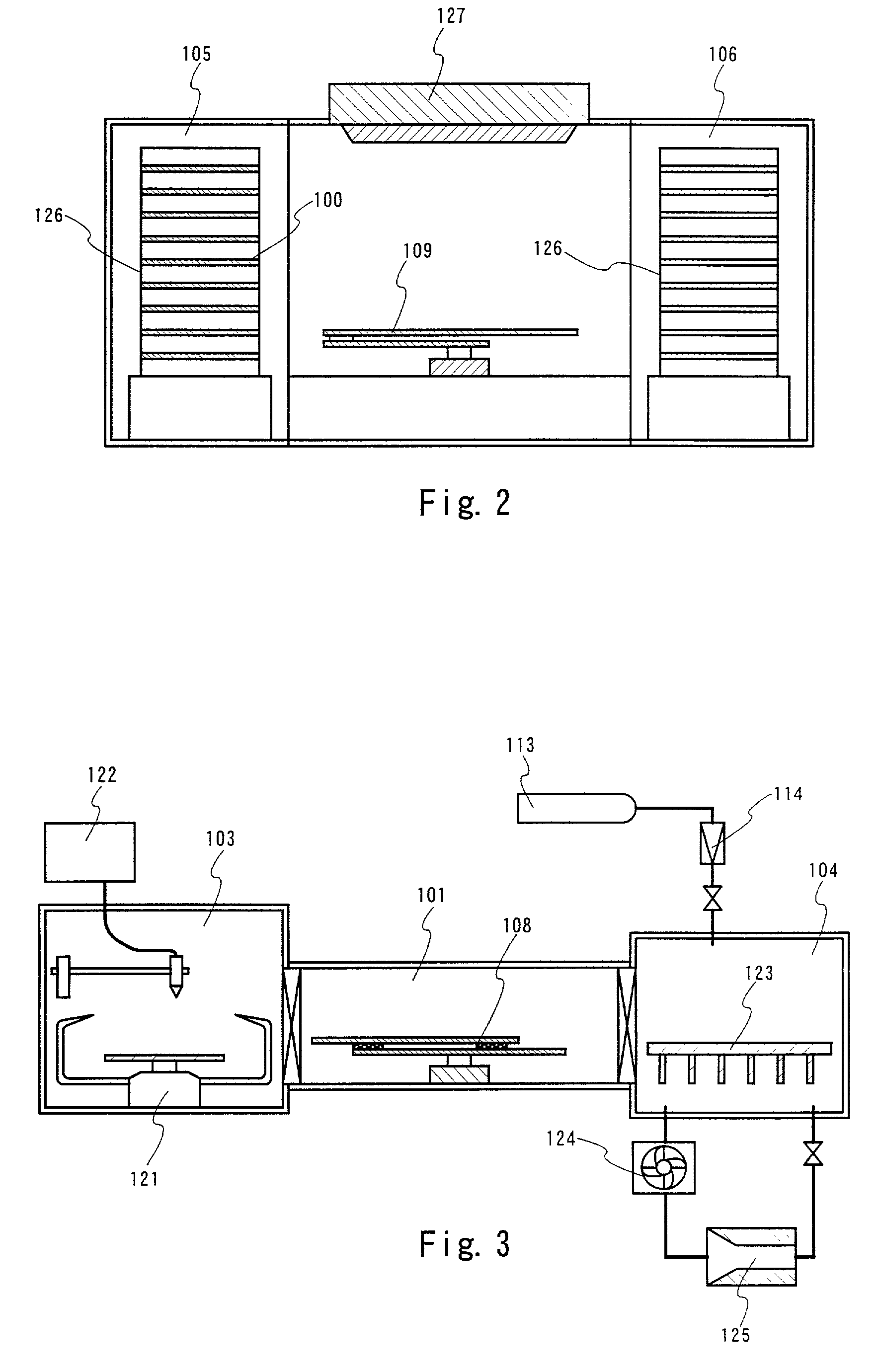Heat treatment apparatus and method of manufacturing a semiconductor device
a heat treatment apparatus and semiconductor technology, applied in the direction of semiconductor devices, semiconductor device details, electrical apparatus, etc., can solve the problems of substrate distortion, cracking, and inability to perform steps, and achieve the effect of increasing reducing the supply amount of coolan
- Summary
- Abstract
- Description
- Claims
- Application Information
AI Technical Summary
Benefits of technology
Problems solved by technology
Method used
Image
Examples
embodiment 1
[0052]An embodiment of a method of conducting a heating process of a semiconductor device by using the heat treatment apparatus of the present invention, which has been described with reference to FIGS. 1 to 6, is described.
[0053]In FIG. 9, a field oxide film 204, impurity regions 202 formed by ion injection and a gate 203 are formed on a semiconductor substrate 201.
[0054]Here, the heating process for activation of the impurity regions 202 after the ion injection is shown. After the semiconductor substrate is brought into a processing chamber, vacuum exhaust is conducted to approximately 0.1 to 0.0001 Pa by an exhaust means. Then, He as a coolant is introduced. The pressure after the introduction of He is set to approximately 1 to 1000 Pa. Thereafter, as described in FIG. 8, pulse light is irradiated plural times to perform crystallization. The pulse light may be irradiated from one surface or both surfaces of the semiconductor substrate. The impurity regions can be activated to hav...
embodiment 2
[0056]An example of a process of manufacturing a MOS transistor by using a manufacturing device according to the present invention is described.
[0057]In FIGS. 10A to 10C, an n-well 302 and a p-well 303 are formed on a substrate 301 formed of single crystal silicon with relatively high resistance (for example, n type, approximately 10 Ωcm) with one mask in a self-aligning manner. Then, a field oxide film 305 is formed. At this time, boron (B) may be selectively introduced into the semiconductor substrate by an ion injection method to form a channel stopper. Then, a silicon oxide film 306 that becomes a gate insulating film is formed by a thermal oxidization method. Subsequently, a polycrystalline silicon film for a gate is formed with a thickness of 100 to 300 nm by a CVD method. Phosphorous (P) at a concentration of approximately 1021 / cm3 may be previously doped into the polycrystalline silicon film for a gate in order to make resistance lower. Alternatively after the polycrystallin...
embodiment 3
[0066]In this embodiment, an embodiment of a manufacturing process of a MOS transistor using a salicide technique by using the heat treatment apparatus of the present invention is described.
[0067]In FIG. 12A, the same substrate as that in Embodiment 1 is used as a substrate 401, and an n-well 402 and a p-well 403 are formed with one mask in a self-aligning manner. Further, a field oxide film 405 is formed. Then, a silicon oxide film 406 that becomes a gate insulating film is formed by a thermal oxidization method. Gates 407 and 408 are formed of a polycrystalline silicon film added with an n-type impurity typified by phosphorous at a high concentration.
[0068]Next, as shown in FIGS. 12B and 12C, impurity elements respectively imparting an n-type conductivity and a p-type conductivity are added in order to form low concentration drain (LDD) regions in an n-channel MOS transistor and a p-channel MOS transistor. This may be conducted by an ion doping method or an ion injection method. P...
PUM
 Login to View More
Login to View More Abstract
Description
Claims
Application Information
 Login to View More
Login to View More - R&D
- Intellectual Property
- Life Sciences
- Materials
- Tech Scout
- Unparalleled Data Quality
- Higher Quality Content
- 60% Fewer Hallucinations
Browse by: Latest US Patents, China's latest patents, Technical Efficacy Thesaurus, Application Domain, Technology Topic, Popular Technical Reports.
© 2025 PatSnap. All rights reserved.Legal|Privacy policy|Modern Slavery Act Transparency Statement|Sitemap|About US| Contact US: help@patsnap.com



